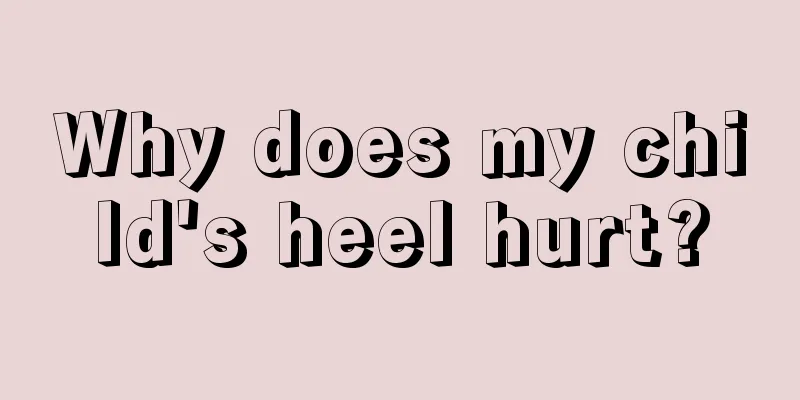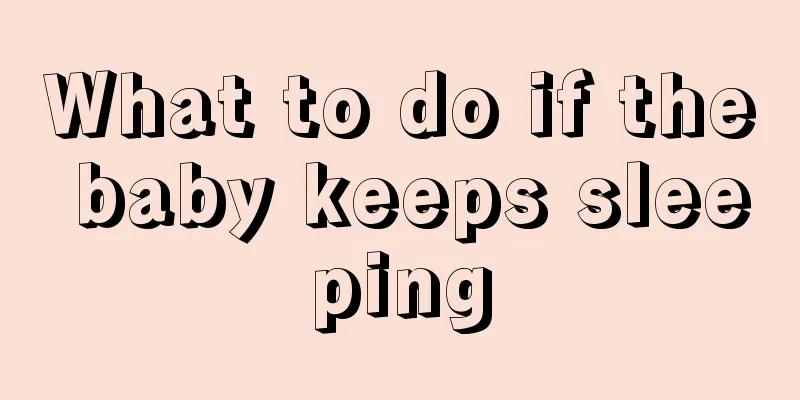Why does my child's heel hurt?

|
Many children usually have heel pain. This is also a common disease among children. However, many parents do not pay attention to it. When a child has heel pain, we must pay attention to it, especially to go to the hospital with the child for timely examination and treatment, especially to find out the cause. This is also an abnormal phenomenon. So, what is going on with children's heel pain? Let’s take a look at it below. Calcaneal epiphysis osteochondrosis (calcaneal epiphysisitis) is a type of heel pain that occurs in children, also known as childhood heel pain. The calcaneus develops from two ossification centers, one that begins at birth and the other that usually forms after the age of 8 years. Before complete ossification occurs (usually by the age of 16), the fibers of the two parts of bone or tendon attachment to the epiphysis are connected together by cartilage, and strenuous activity can cause the cartilage to break. Heel pain in all children is more common in children who love sports. Diagnosis and treatment It is a self-limited disease involving the calcaneal epiphysis. It is more common in children aged 8-13 years old, especially in boys. In most patients, the onset of the disease seems to be related to excessive repetitive injury or stress to the Achilles tendon at its attachment to the calcaneus. There is often pain behind the heel, especially when running, jumping, or climbing stairs, and sometimes there is an occasional limp. On examination, there is a round swelling behind the heel that is hard and tender. Tenderness may occur not only behind the calcaneus but also on the outer side of the calcaneus. X-ray shows soft tissue swelling at the attachment of the Achilles tendon. The size, shape, density and internal structure of the ossification center of the calcaneus are irregular, and fragments can sometimes be seen. It is worth noting that X-ray manifestations similar to calcaneal epiphyseal osteochondrosis are often seen in normal children. This disease should be differentiated from retrocalcaneal bursitis, Achilles tendinitis, etc. When you have symptoms, avoid strenuous exercise such as jumping, running, etc. Pain relief may be achieved by elevating the heel to reduce tension on the Achilles tendon and by eliminating any factors that may be causing pressure behind the heel. Through the above introduction, we know what causes heel pain in children. When a child has this condition, we must pay attention to it, especially by actively checking. If it is not pathological, we must pay attention to it in life. If it is pathological, we need to find out the cause and carry out timely treatment. We must also pay attention to the care of the child in normal times. |
<<: How high a pillow is suitable for a one-year-old baby
>>: What is the reason for a child's thick white tongue coating?
Recommend
What should children eat if they have nasal congestion and cough?
Children have weaker immunity and are easily infe...
What to do if your six-month-old baby's belly button is red
A baby is the hope of a family, so after the baby...
How to educate a 3-year-old child who loves crying
Three-year-old children are not only in the golde...
Parents must know: These 7 kinds of fish should not be given to children
Children whose bodies are still developing can su...
Is it good for children to take a bath in the morning?
In the eyes of our parents, children are the grou...
What is aspiration pneumonia in children
I believe everyone knows the importance of lungs ...
Should children be covered with blankets when they have a fever?
Fever is a normal reaction of our body. It often ...
Two-year-old baby development indicators
Ten months of pregnancy and one day of delivery e...
How to treat right spermatic cord hydrocele in children?
Parents and friends are confused about how to cho...
Normal progesterone values and treatment methods for two months of pregnancy
Abnormal progesterone levels two months into the ...
How high is the pillow for a six-month-old baby?
6-month-old babies are in an important and critic...
Can I use a fan when my child has a high fever?
A high fever in children is a common symptom. In ...
8-year-old child often wets the bed
If an eight-year-old child always wets the bed, p...
What kind of milk powder is good for a three-year-old child
Some children grow up drinking milk powder. Since...
What are the treatments for rhinitis in children?
Young children's physical development is not ...









